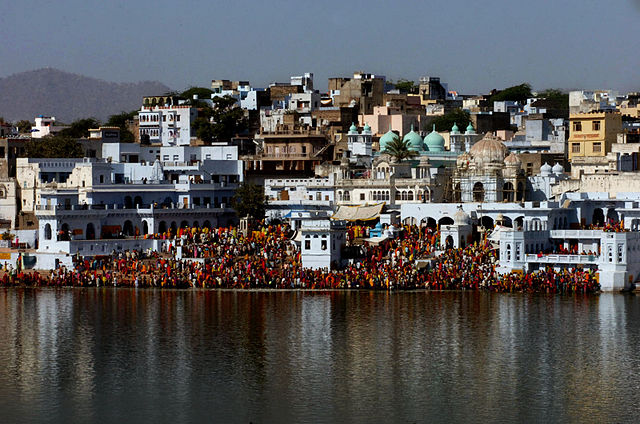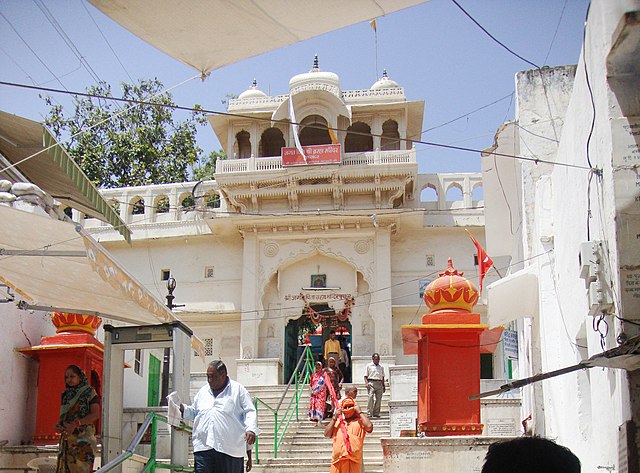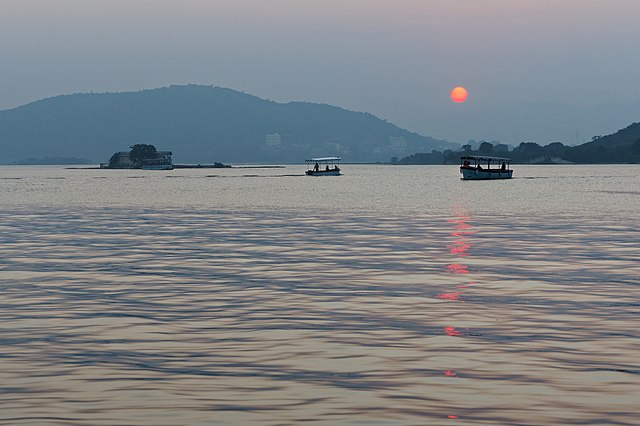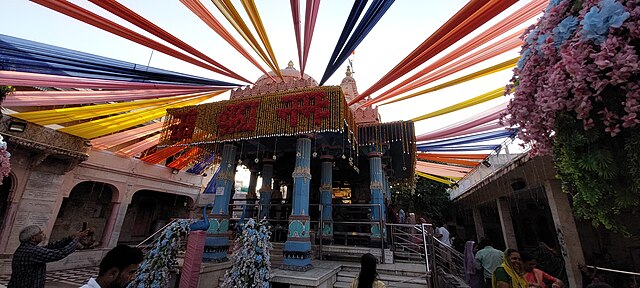Have you ever wondered why a god as mighty as Brahma, the creator of the universe, has so few temples dedicated to him? Nestled in the vibrant town of Pushkar, Rajasthan, the Brahma Temple stands as a rare gem, drawing pilgrims and curious travelers alike. This sacred site, perched by the serene Pushkar Lake, is steeped in mythology, history, and spiritual allure. Let’s embark on a journey to uncover the magic of this unique temple, exploring its stories, architecture, and why it’s a must-visit for anyone seeking a blend of spirituality and culture.
The Rarity of Brahma Temples: Why So Few?
In the vast tapestry of Hindu mythology, Brahma, Vishnu, and Shiva form the holy trinity. Yet, while Vishnu and Shiva boast countless temples across India, Brahma’s shrines are scarce. Why is that? The answer lies in an ancient tale of divine drama. According to legend, Brahma’s wife, Savitri, cursed him after a misunderstanding during a sacred ritual, declaring he’d rarely be worshipped. Pushkar, however, was spared from this curse, making its Brahma Temple one of the only places where devotees can offer prayers to the creator god. This rarity alone makes the temple a spiritual magnet, pulling in those eager to connect with the divine.
The Mythological Tale Behind the Temple

Picture this: Lord Brahma, preparing for a grand yajna (fire sacrifice) by the sacred Pushkar Lake, needed his wife Savitri by his side. But she was delayed, caught up with her divine companions. Impatient, Brahma married a local girl named Gayatri to complete the ritual. When Savitri arrived and saw Gayatri in her place, her fury shook the heavens. She cursed Brahma, limiting his worship to Pushkar alone. But Gayatri, with her divine grace, softened the curse, ensuring Brahma’s presence would still be revered here. This tale, woven into the temple’s identity, adds a layer of intrigue that captivates every visitor.
The Role of Pushkar Lake in the Legend
The temple’s story is incomplete without mentioning Pushkar Lake, believed to have been formed by the petals of Brahma’s lotus flower. As the legend goes, Brahma slayed a demon named Vajranabha with his lotus weapon, and where the petals fell, three sacred lakes emerged: Jyeshta (main), Madya (middle), and Kanishta (youngest). The main Pushkar Lake, surrounded by 52 ghats, is a spiritual hub where pilgrims take a holy dip before visiting the temple, believing it cleanses sins and brings divine blessings.
A Glimpse into the Temple’s History
The Brahma Temple in Pushkar isn’t just a spiritual landmark; it’s a historical treasure. Dating back to the 14th century, the current structure was rebuilt after invasions during the Mughal era, particularly under Emperor Aurangzeb’s reign. The original temple, believed to be over 2,000 years old, was constructed by the sage Vishwamitra. Later, the 8th-century philosopher Adi Shankara renovated it, and Maharaja Jawat Raj of Ratlam added his touch to the medieval design we see today. Each stone in this temple whispers tales of resilience and devotion, standing tall through centuries of change.
Architectural Marvel of the Brahma Temple
Step into the Brahma Temple, and you’re greeted by a blend of simplicity and grandeur. Built with marble and stone slabs, the temple’s most striking feature is its vibrant red shikhara (spire), piercing the Rajasthani sky like a beacon of divinity. The hamsa (swan) motif, symbolizing wisdom and grace, adorns the structure, adding to its charm. Inside, the sanctum sanctorum houses a four-headed idol of Lord Brahma, alongside his consort Gayatri, radiating a serene yet powerful aura. The intricate carvings and modest yet elegant design make it a feast for the eyes and soul.
The Significance of the Four-Headed Idol
Ever noticed how Brahma is depicted with four heads? Each head represents one of the four Vedas—Rig, Yajur, Sama, and Atharva—symbolizing his role as the source of all knowledge. The idol in Pushkar’s temple captures this essence, with Brahma’s serene expression inviting devotees to reflect on creation and wisdom. The presence of Gayatri beside him adds a layer of balance, reminding us of the harmony between creation and nurturing.
Spiritual Significance of the Brahma Temple
The Brahma Temple isn’t just a place of worship; it’s a spiritual vortex. Recognized as one of the ten most religious sites globally and one of the five sacred Hindu pilgrimage destinations, it holds a special place in the hearts of devotees. The temple is governed by the Sanyasi (ascetic) sect, whose priests guide rituals with precision and reverence. Visiting the temple, especially during Kartik Poornima, is believed to grant spiritual purification and divine blessings, making it a bucket-list destination for the devout.
Kartik Poornima: The Festival of Brahma
Imagine a town buzzing with devotion, colorful fairs, and the scent of incense wafting through the air. That’s Pushkar during Kartik Poornima, the festival dedicated to Lord Brahma. Held in November, this event coincides with the famous Pushkar Camel Fair, drawing thousands of pilgrims who bathe in the sacred lake before offering prayers at the temple. The atmosphere is electric, with chants, aartis (prayer ceremonies), and a sense of unity that transcends borders. It’s a time when Pushkar truly comes alive, offering a glimpse into Rajasthan’s vibrant spiritual culture.
Rituals and Aartis at the Temple
The daily rituals at the Brahma Temple are a soul-stirring experience. The morning and evening aartis, where priests offer lamps and chants to the deity, create an ambiance of peace and divinity. Devotees participate in these ceremonies, offering flowers, coconuts, and prayers. The rhythmic chants and the glow of oil lamps make you feel like you’re part of something ancient and eternal. If you’re lucky, you might catch a special ritual during festivals, where the temple’s spiritual energy is at its peak.
Exploring Pushkar: Beyond the Brahma Temple

Pushkar is more than just the Brahma Temple; it’s a town brimming with charm. With over 500 temples, including the Varaha Temple and Rangji Temple, there’s no shortage of spiritual exploration. The Pushkar Lake, with its 52 ghats, is perfect for a quiet evening of reflection or a sunset stroll. For adventure seekers, camel safaris and desert camping offer a taste of Rajasthan’s rugged beauty. And let’s not forget the bustling bazaars, where you can shop for handicrafts, jewelry, and local delicacies like malpua.
The Pushkar Camel Fair: A Cultural Extravaganza
Ever dreamed of witnessing a festival that blends tradition, trade, and tourism? The Pushkar Camel Fair, held annually during Kartik Poornima, is just that. Picture thousands of camels, horses, and cattle decked out in colorful finery, traders haggling, and folk performances filling the air with music and dance. It’s a cultural spectacle that complements the spiritual vibe of the Brahma Temple, making your visit to Pushkar a multi-dimensional experience.
Best Time to Visit the Brahma Temple
Timing your visit to Pushkar can make or break your experience. The best months are November to February, when the weather is cool and pleasant, perfect for exploring the temple and lake. Summers in Rajasthan are scorching, often hitting 40°C, so avoid April to June unless you’re a fan of intense heat. Monsoons (July to September) bring relief but can make the town less accessible. For the ultimate experience, plan your trip during the Pushkar Camel Fair, when spirituality and festivity collide.
How to Reach Pushkar
Getting to Pushkar is easier than you might think. The nearest airport is in Jaipur, about 150 km away, with regular flights from major Indian cities. From there, you can hire a taxi or take a bus to Pushkar. If you prefer trains, Ajmer (15 km away) is the closest railway station, well-connected to Delhi, Mumbai, and other cities. Buses run frequently from Ajmer to Pushkar, and auto-rickshaws or taxis are available for the short ride to the temple. The journey is scenic, with the Aravalli hills as your backdrop.
Travel Tips for a Hassle-Free Visit
Ready to visit the Brahma Temple? Here are some tips to make your trip smooth: Dress modestly, as it’s a religious site. Photography is prohibited inside the main temple, so respect the rules. Be prepared for crowds during festivals, and book accommodations in advance. Also, watch out for unofficial guides or priests offering rituals for a fee—stick to trusted sources. Lastly, carry a water bottle and sunscreen, as Rajasthan’s sun can be relentless even in winter.
Why the Brahma Temple is a Must-Visit

The Brahma Temple in Pushkar isn’t just a place; it’s an experience that lingers in your heart. Its rarity as one of the few temples dedicated to Brahma, combined with its rich mythology and serene ambiance, makes it a unique pilgrimage. Whether you’re a spiritual seeker, a history buff, or a traveler chasing cultural adventures, this temple offers something for everyone. It’s like stepping into a living legend, where every stone, ritual, and chant tells a story of creation and devotion.
Conclusion
The Brahma Temple in Pushkar is more than a destination—it’s a journey into the heart of Hindu spirituality and Rajasthani culture. From its mythological origins to its stunning architecture and vibrant festivals, the temple weaves a tapestry of faith, history, and beauty. Whether you’re drawn by the lure of Lord Brahma’s rare worship, the serene Pushkar Lake, or the colorful chaos of the Camel Fair, a visit here promises memories that last a lifetime. So, pack your bags, set your intentions, and let Pushkar’s divine energy guide you to an unforgettable adventure.
FAQs
1. Why is the Brahma Temple in Pushkar so significant?
The Brahma Temple is one of the few temples dedicated to Lord Brahma, the creator god, due to a mythological curse limiting his worship. Its location by the sacred Pushkar Lake and its recognition as a top religious site globally add to its significance.
2. Can I take photos inside the Brahma Temple?
No, photography is not allowed inside the main temple area to maintain its sanctity. However, you can take pictures outside and around the Pushkar Lake area.
3. When is the best time to visit the Brahma Temple?
The ideal time is November to February, when the weather is pleasant. Visiting during the Kartik Poornima festival, which coincides with the Pushkar Camel Fair, offers a vibrant experience.
4. How do I reach the Brahma Temple from Jaipur?
You can fly to Jaipur, then take a taxi or bus to Pushkar (about 150 km). Alternatively, travel by train to Ajmer (15 km from Pushkar) and take a bus or taxi to the temple.
5. Are there other attractions near the Brahma Temple?
Yes, Pushkar has over 500 temples, including the Varaha and Rangji Temples. The Pushkar Lake, local bazaars, camel safaris, and the annual Camel Fair are also major attractions.

